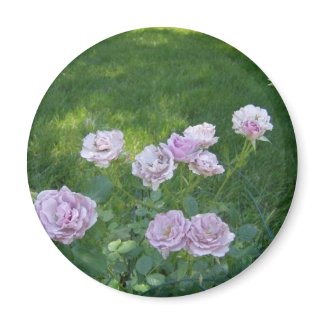Magnetic therapy has been around for awhile and even Cleopatra was known to have worn a magnet which she believed kept her youth and beauty.Scientific studies have shown that a static magnetic field of moderate strength can result in reduction of swelling. How many people do you know who suffer from arthritus wear and swear by wearing a magnetic or copper bracelt. My mother even bought a new one on the copper. She often takes a penny or two to tape on her wrist. I asked her why one day and she said it helped her arthritus. Now, I have never thought of that. Magnets, of course, have two poles with one being north and the other being the south.
You can use the north or south poles to treat different parts of the body. The North Pole can be used to treat muscle weakness, blood circulation disorders, under-activitiy of an organ, pancreatic stimulation to secrete more insulin and the South Pole is used to treat muscular cramps, mental tension, sleeplessness, anxiety, short temper, pulled muscles, localized swelling, any painful condition like a headache or a toothache, boils, tumors, over-activitity of a gland. I always like to keep a magnet handy.
Is it any wonder that one my very favorite things to create on my zazzle is magnets, they are not only good for your health, but can provide for some very pretty pictures. I even believe that they help me keep my diet in place because I keep them on my refrigerator and so, when I go to look in the fridge, just before I open the door I see a pretty little picture such as a place in Chicago, Oak Island, Chimney Rock or a pretty sunset. Consequently, I forget about the food momentarily and am reminded of the pleasant trip or outing, so when I look in my fridge, the memory is with me and I am more stable as well as realistic of what it is I need to eat rather than constantly thinking of the food. Does that make sense? Psychologically, I do believe it works:
This blog will focus on natural health and healing issues, products from organic, healthcare companies, aromotherapy, flower remedies, as well as tips on staying well and living a life without toxins
Thursday, November 12, 2009
Thursday, July 9, 2009
Thursday, June 4, 2009
Tips For What To Do For a Colicky Baby
Colic must be a terrible experience for a baby and it is so frustating when you have tried to help him or her feel better, but the crying continues. Here are some helpful ways to control and lessen the experience of it:
1. Do set the baby "in motion". Mild repetitious motion, such as a rocking chair can calm a colicky baby.
2. Let the baby sleep. Some experts would have you picking up a baby everytime he or she cries and it really is important to establish the issue of trust with your baby during the first year. However, when it comes to colic, often what the baby needs is to get to sleep, and the more you pick them up, it stimulates them further. Chances are, the baby is very tired and sleepy, along with the colic problem. To assess whether its fatigue, try everything else first. Feeding, burping, changing, cuddling. Then, if the baby continues to cry, he or she is tired and should try to sleep, so put the baby down and walk away. Often, the baby will settle down in five minutes and sleep.
3. Stay calm. Remember, this is an unpleasant stage in the baby's development and will pass.
4. Take the baby off cow's milk. Personally, I believe that cow's milk is only good for a baby calf. The best advice is to breastfeed for a year and even then, do not use cow's milk. Studies do show that babies reared on cow's milk often have allergies and other ailments. There are other types of milk such as soymilk or rice milk.
5. Try peppermint water, it is a century-old remedy for colic. Get a piece of peppermint and soak it in spring water, then feed a bottlefull of the peppermint-flavored water to the baby. Never use straight peppermint oil though as this will be too strong for the baby.
6. Keeping a calender is a good idea of your baby's weight as well as the frequency and length of crying bouts will be of help to keep track of the baby's progress through this painful stage
7. Soothe the baby and maintain as much direct contact as possible with your newborn. Studies are showing now that carrying a baby more frequently before colic ever sets in, may lessen or even prevent the condition from ever developing in the first place.
8. Put your baby on a schedule of sleeping and waking as this will get the baby in a habit of falling asleep without your assistance. When sleep time comes, kiss, hug, sing them songs and this way they learn to make a transition from alert to sleeping time.
9. Touch base with your pediatrician
1. Do set the baby "in motion". Mild repetitious motion, such as a rocking chair can calm a colicky baby.
2. Let the baby sleep. Some experts would have you picking up a baby everytime he or she cries and it really is important to establish the issue of trust with your baby during the first year. However, when it comes to colic, often what the baby needs is to get to sleep, and the more you pick them up, it stimulates them further. Chances are, the baby is very tired and sleepy, along with the colic problem. To assess whether its fatigue, try everything else first. Feeding, burping, changing, cuddling. Then, if the baby continues to cry, he or she is tired and should try to sleep, so put the baby down and walk away. Often, the baby will settle down in five minutes and sleep.
3. Stay calm. Remember, this is an unpleasant stage in the baby's development and will pass.
4. Take the baby off cow's milk. Personally, I believe that cow's milk is only good for a baby calf. The best advice is to breastfeed for a year and even then, do not use cow's milk. Studies do show that babies reared on cow's milk often have allergies and other ailments. There are other types of milk such as soymilk or rice milk.
5. Try peppermint water, it is a century-old remedy for colic. Get a piece of peppermint and soak it in spring water, then feed a bottlefull of the peppermint-flavored water to the baby. Never use straight peppermint oil though as this will be too strong for the baby.
6. Keeping a calender is a good idea of your baby's weight as well as the frequency and length of crying bouts will be of help to keep track of the baby's progress through this painful stage
7. Soothe the baby and maintain as much direct contact as possible with your newborn. Studies are showing now that carrying a baby more frequently before colic ever sets in, may lessen or even prevent the condition from ever developing in the first place.
8. Put your baby on a schedule of sleeping and waking as this will get the baby in a habit of falling asleep without your assistance. When sleep time comes, kiss, hug, sing them songs and this way they learn to make a transition from alert to sleeping time.
9. Touch base with your pediatrician
Subscribe to:
Comments (Atom)














